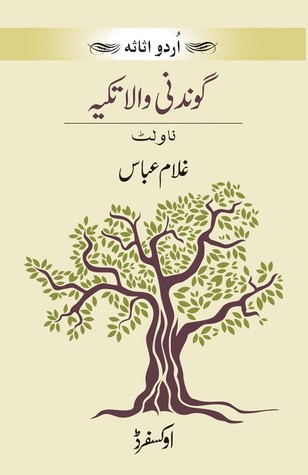Ghulam Abbas and the short story tradition by Intizar Husain
 Oxford University Press, Karachi, has come out with a plan to provide introductions to leading Urdu short story writers from the 1930s and 1940s for the benefit of today’s readers. This series starts with Ghulam Abbas, who was the senior-most among the writers of this generation.
Oxford University Press, Karachi, has come out with a plan to provide introductions to leading Urdu short story writers from the 1930s and 1940s for the benefit of today’s readers. This series starts with Ghulam Abbas, who was the senior-most among the writers of this generation.
The collection, Intikhab Ghulam Abbas, with 18 short stories, has been compiled by Asif Farrukhi, who has also written an introduction to the series along with a foreword with particular reference to Abbas. It is followed by an article by Muhammad Hasan Askari, who critically assessed Abbas as a short story writer.
According to Askari’s analysis, Abbas stands distinguished for his sense of serenity and restraint in contrast to his younger contemporaries who were in a rebellious mood and had developed a passion for bringing change in society. And according to Askari, this is why Abbas failed to gain the kind of popularity the rebel story writers did, in spite of the fact that one of his short stories, ‘Anandi,’ was one of the biggest successes of that period.
In fact, Abbas started writing before the rebel storytellers made their entry onto the literary scene. Those were peaceful years in our literary history. Thus Abbas could afford to devote enough time to the art of storytelling and to improving his expression. In later years, when rebellious writings were in full swing, Abbas’ aim for artistic perfection was his strength as well as his weakness. While writing he was never in a hurry and was never loud and uncouth in his expression. True to his moderate temperament, he wrote softly, aiming for flawless expression.
At the same time, Abbas wrote in the current realist mode of expression. But he had his own way of writing. In his story ‘Hamsaiy,’ included in the collection, Abbas exhibited a unique way of collecting minute details bit by bit. Slowly and gradually he inserted these details, similar to how a builder well-versed in his art goes on fixing small bricks. And in the end we find, to our pleasant surprise, a well-knit story steeped in the realist mode of expression.
Abbas made use of realistic details in abundance, seemingly drab and insignificant, and inserted them in his descriptions, which in the end seemed transformed into delightful realistic accounts of situations carrying deep social significance. This skill is best brought out in ‘Anandi’. However, at the end of this volume we find a unique story titled ‘Dhanak,’ a kind of fantasy, which has now come to stay as a prophetic short story. Abbas wrote this story in the late 1960s. It is a kind of fantasy where Pakistan has been conceived as a state scientifically advanced enough to have its spaceship land on the surface of the moon.
But the mullahs regard it as a sacrilegious act and start a movement against the establishment of the state. This eventually leads to a change of government. Now the mullahs are in power. This leads to violence and anarchic conditions in the country. The story can now be interpreted as an attempt to foresee what was going to happen in Pakistan in the coming years. Its dramatic rendering has already been presented on the stage, winning applause from the audience.
Intikhab Ghulam Abbas is a well-conceived introduction to Abbas, a great master of Urdu short story. The selected stories are truly representative of his art of story writing and have the ability to attract readers of fiction.
